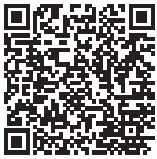Ulnar Neuropathy at the Elbow
OBJECTIVES
To name the most common symptoms of an ulnar neuropathy.
To name the most useful diagnostic test to confirm an ulnar neuropathy.
To name the most common site of compression or irritation of the ulnar nerve.
To name the most common treatments for ulnar neuropathy.
VIGNETTE
Following a bilateral hernia operation, this 70-year-old man complained of paresthesias on the fourth and fifth digits of his left hand. He also noticed some decrease in grip strength of that hand.
 |
Ulnar neuropathy is the second most common entrapment neuropathy. The ulnar nerve can be compressed at a variety of sites along its course from the brachial plexus to the hand. By far the most common site of compression is at the elbow where the nerve passes through a fibroosseous canal called the cubital tunnel. The most common sensory symptoms are numbness and paresthesias of the medial forearm, medial hand, fifth digit, and ulnar half of the fourth digit. An early manifestation of ulnar neuropathy is characterized by the inability of the small finger to fully adduct and touch the ring finger (Wartenberg sign). Motor symptoms such as decreased hand dexterity or impaired typing or playing a musical instrument most commonly result from weakness of intrinsic hand muscles. Atrophy of the hypothenar eminence or first dorsal interosseous muscle may be noted (Fig. 2.1). In chronic ulnar neuropathy, paresis of interossei and ulnar lumbricals causes a “claw hand” deformity (Fig. 2.1A). Weakness of the adductor pollicis muscle results in the Froment’s prehensile thumb sign, as patients increase pinch grip by relying on the distal flexion of
the thumb (“reverse” Kiloh-Nevin syndrome), innervated by the anterior interosseous nerve (Fig. 2.1B). This pattern of weakness is different from that of median neuropathy at the wrist (Fig. 2.2). Proximal ulnar nerve lesions result in weakness of ulnar wrist flexion and terminal phalanges of the fourth and fifth fingers. Sensory deficits beyond 2 cm above the wrist localize the lesion to the T1 root, the medial cord, or the medial cutaneous nerve of arm and forearm. Electromyography (EMG) and nerve conduction studies are the most useful tests to confirm the diagnosis.
the thumb (“reverse” Kiloh-Nevin syndrome), innervated by the anterior interosseous nerve (Fig. 2.1B). This pattern of weakness is different from that of median neuropathy at the wrist (Fig. 2.2). Proximal ulnar nerve lesions result in weakness of ulnar wrist flexion and terminal phalanges of the fourth and fifth fingers. Sensory deficits beyond 2 cm above the wrist localize the lesion to the T1 root, the medial cord, or the medial cutaneous nerve of arm and forearm. Electromyography (EMG) and nerve conduction studies are the most useful tests to confirm the diagnosis.
Stay updated, free articles. Join our Telegram channel

Full access? Get Clinical Tree








